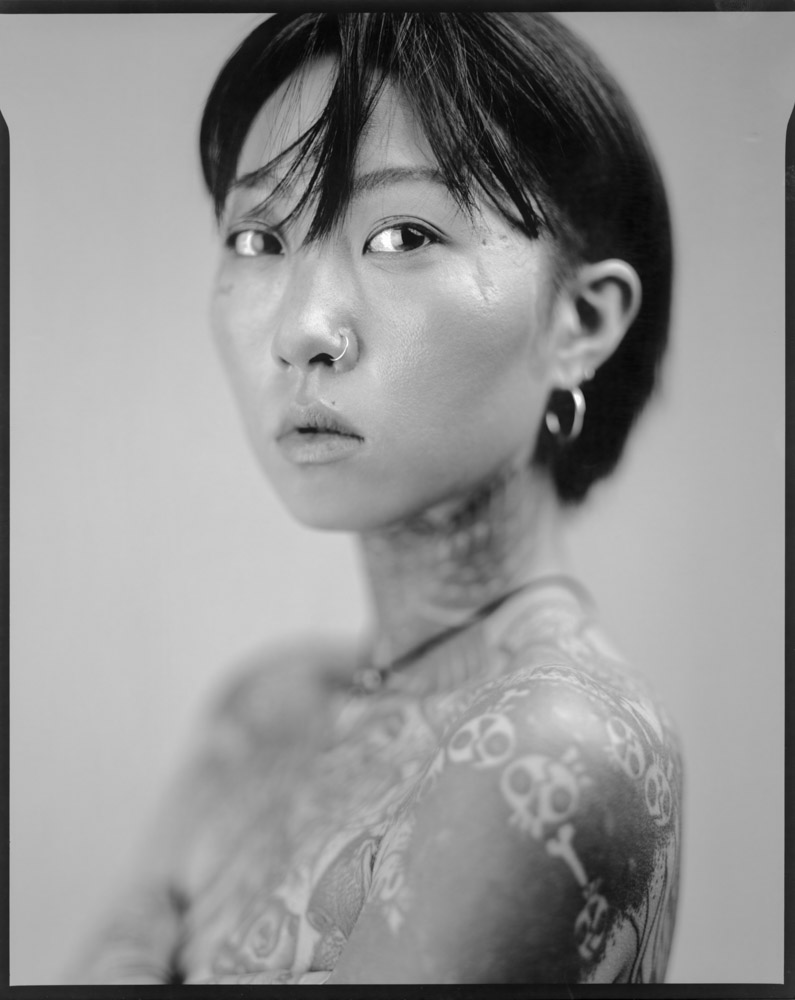Portrait: Honorable Mention 2019 (professional)
ENTRY DESCRIPTION
A series of intimate portraits of the underground tattooist community in South Korea shot on paper negatives.
An obscure South Korean law makes tattooing technically illegal. Although this does not stop a growing number of underground tattoo parlors to open in people’s home or in hidden rooms, it does pose a challenge for a young generation looking to express themselves beyond the imposed ideal South Korean look - often controlled by the Kpop and cosmetic industries.
The tattoo history is actually centuries old in Korea. Sailors marked themselves with frightening shapes to scare away the monsters that inhabited the deep seas. But things changed during the Joseon dynasty when tattoos were used to mark robbers for their crimes and slaves as a perpetual mark of punishment. In the 20th century, South Korean gangs inspired by Japanese Yakuza used tattoos as a distinctive mark. This rather dark history of the art created a negative perception that has endured to this day in this very conservative society. Nowadays, a new generation of Koreans influenced by pop stars, Western athletes and television programs see tattoos as attractive and fashionable. But the ban remains in place.
Those portraits of young South Korean Tattooists who chose to defy laws and cultural standards have been captured directly on pieces of 8x10 inches negative photographic paper.
AUTHOR
Tim Franco is a French Polish photographer born in Paris in 1982. At 18, while studying engineering , he starts an online music magazine for which he takes his first photographs. almost a decade later, he has moved to China and starts working full time as a photographer while documenting the underground music scene in Shanghai. Around this time, Tim starts to document the incredible urbanisation of China and its social impacts while collaborating with newspaper such as Le Monde, Wall Street Journal and the New York Times. This body of work will to the publication of a collaborative book about Architecture and Urbanism in china with the Enrico Navarra Gallery in Paris then to the publication in 2015 of his first Monograph: Metamorpolis - the conclusion of five years of work about the rural migration in the fastest urbanising city in the world: Chongqing. It is during this time that Tim develops his style of working mostly on analog camera and trying to bring a minimalist aesthetic to documentary photography. in 2016, Tim Franco moves to South Korea where he starts working on a long term project about North Korean defectors. He is now collaborating - amongst others - with Time Magazine, National Geographic, Geo Magazine , 6 Mois. He is also working on short term documentaries about Odd places around the planet as well as on commercial photography projects.
back to gallery
